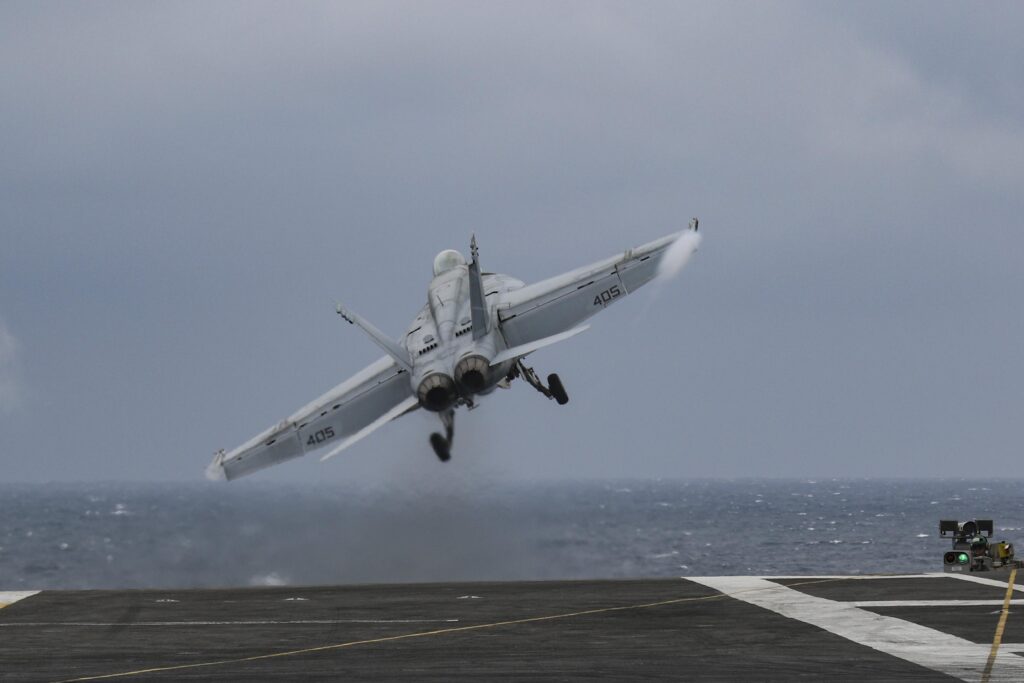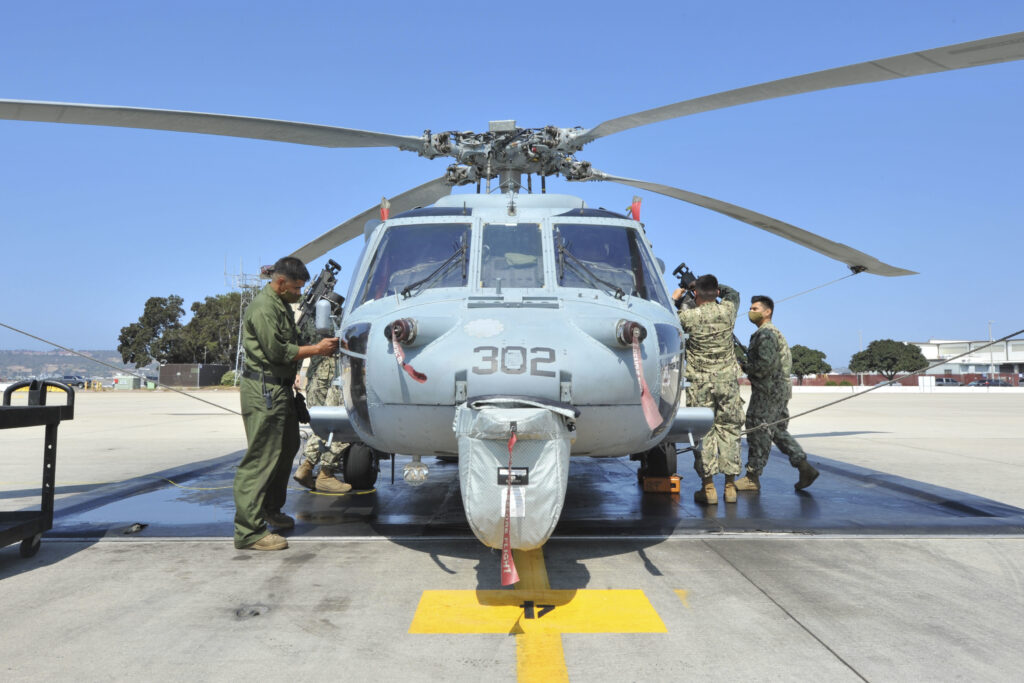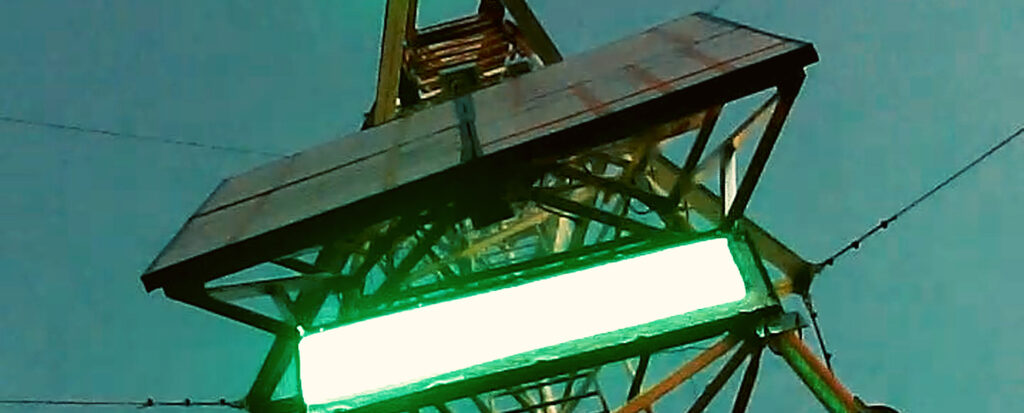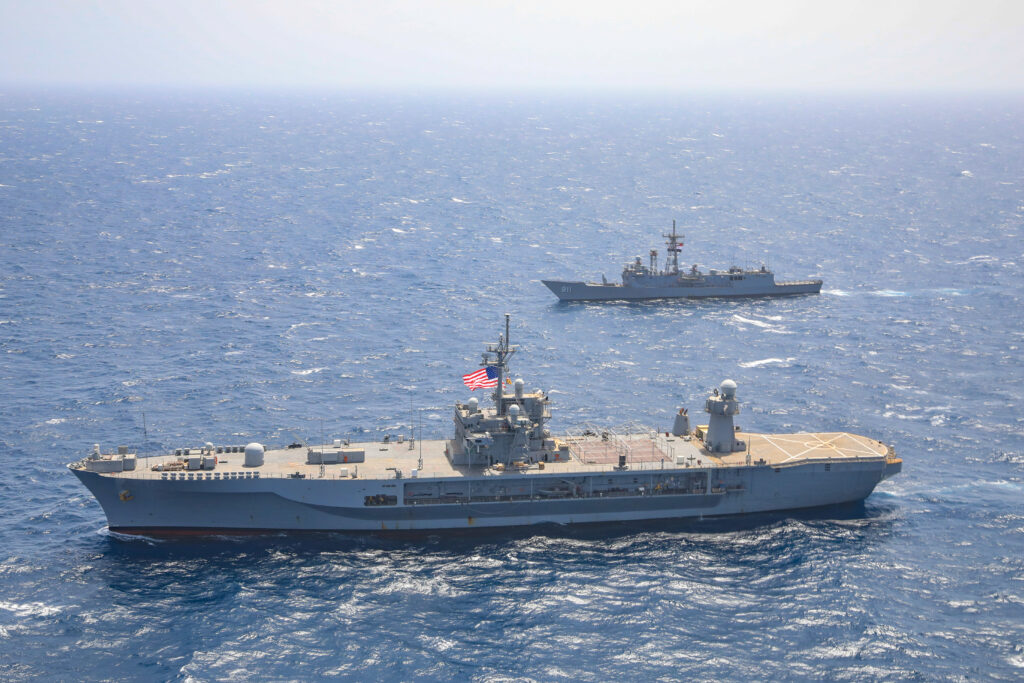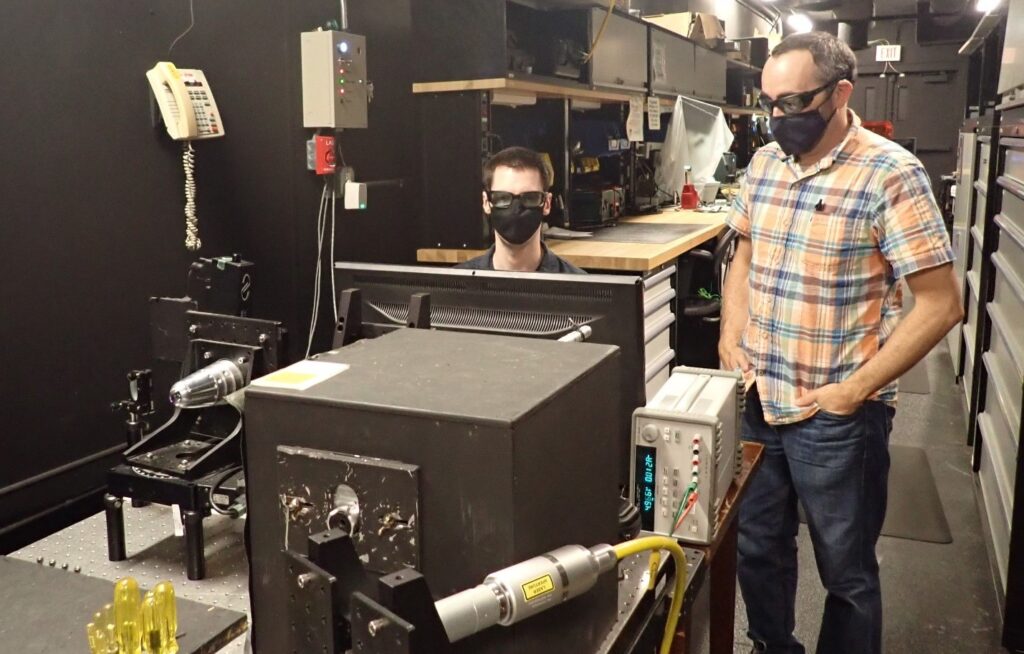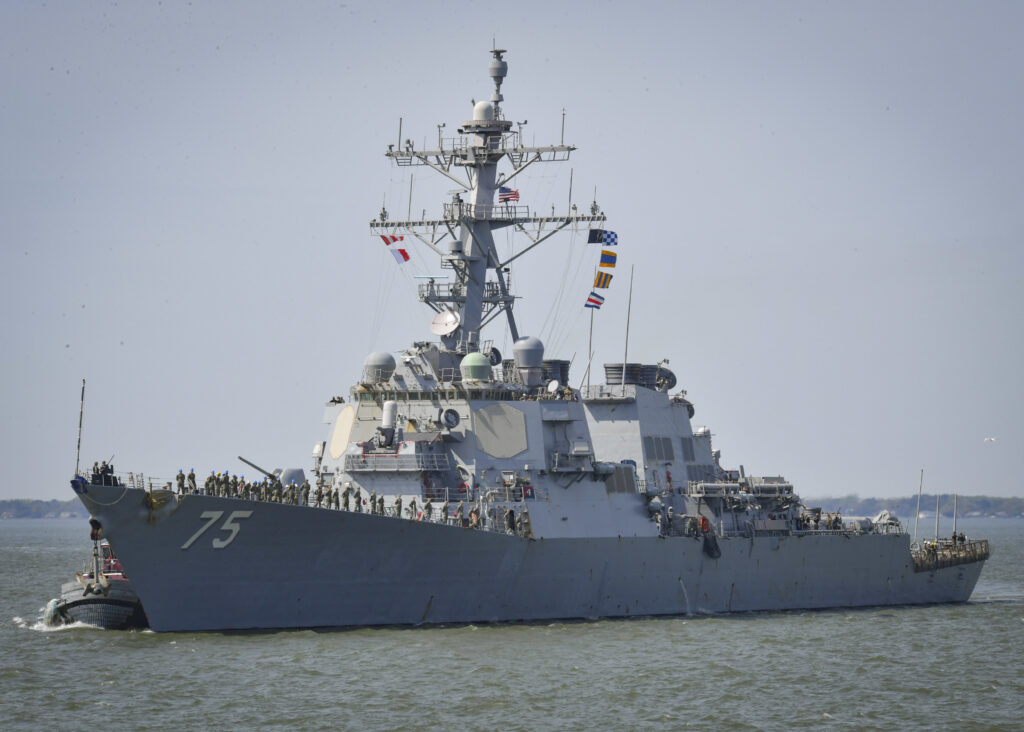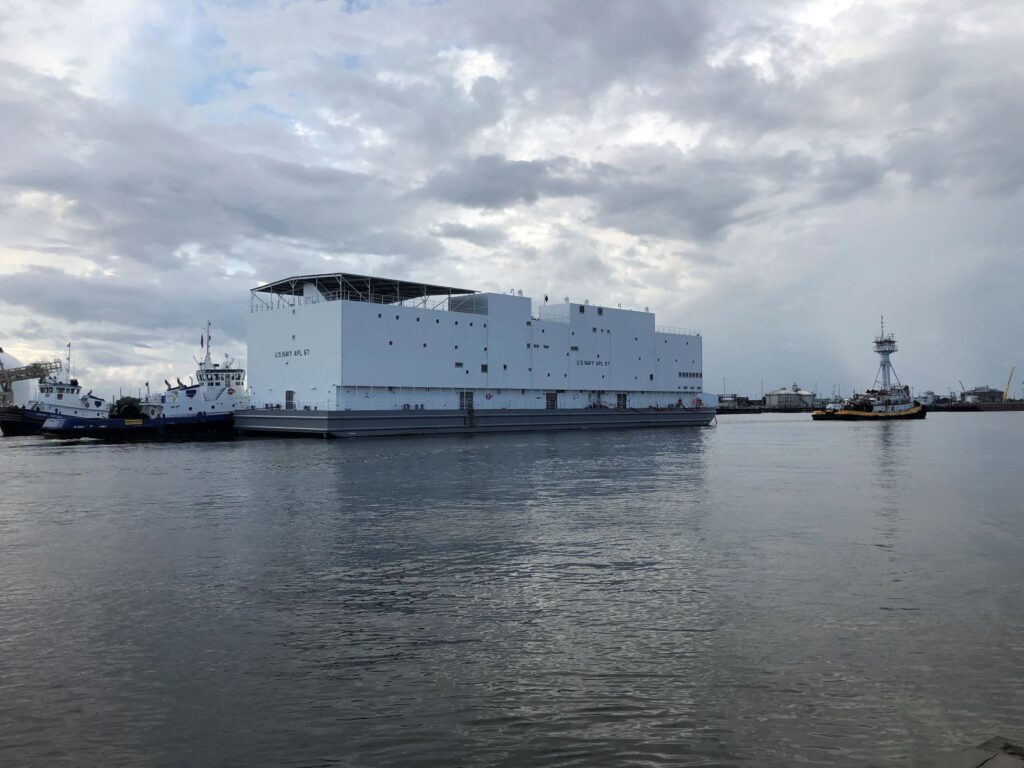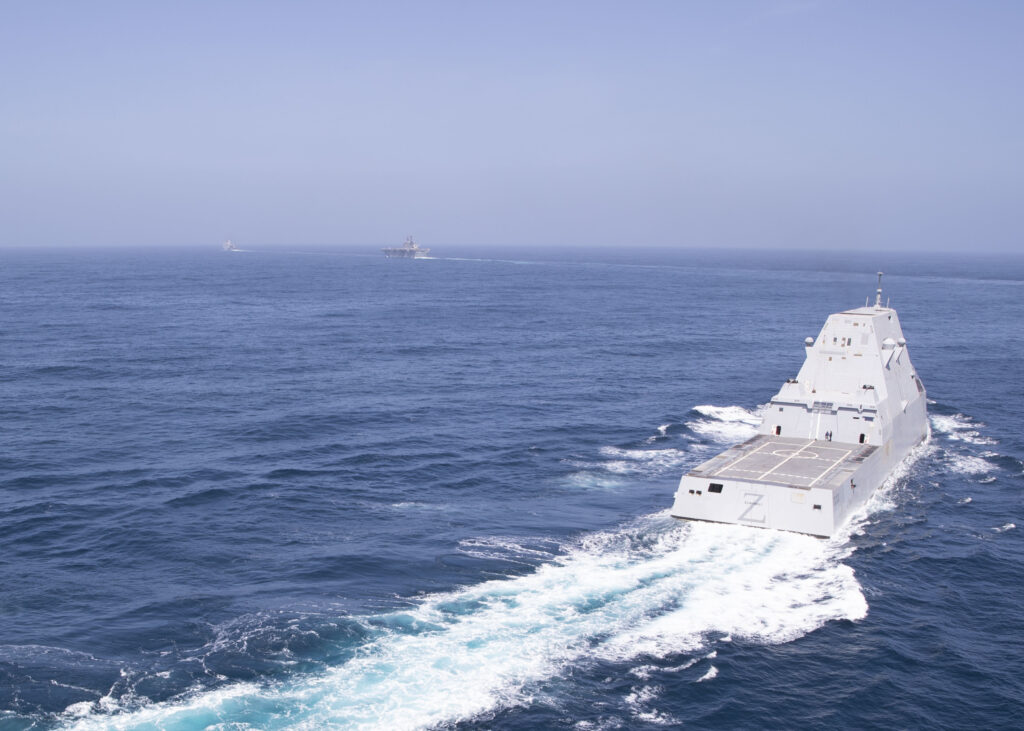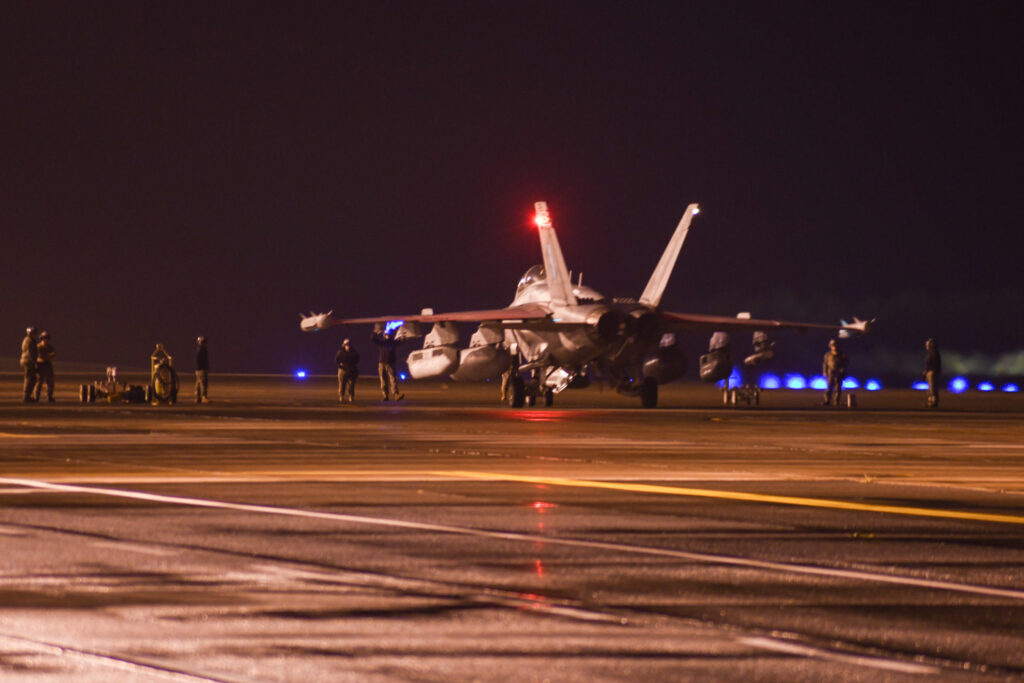Aboard USS Jackson, MQ-8C Fire Scout Returns to Flight
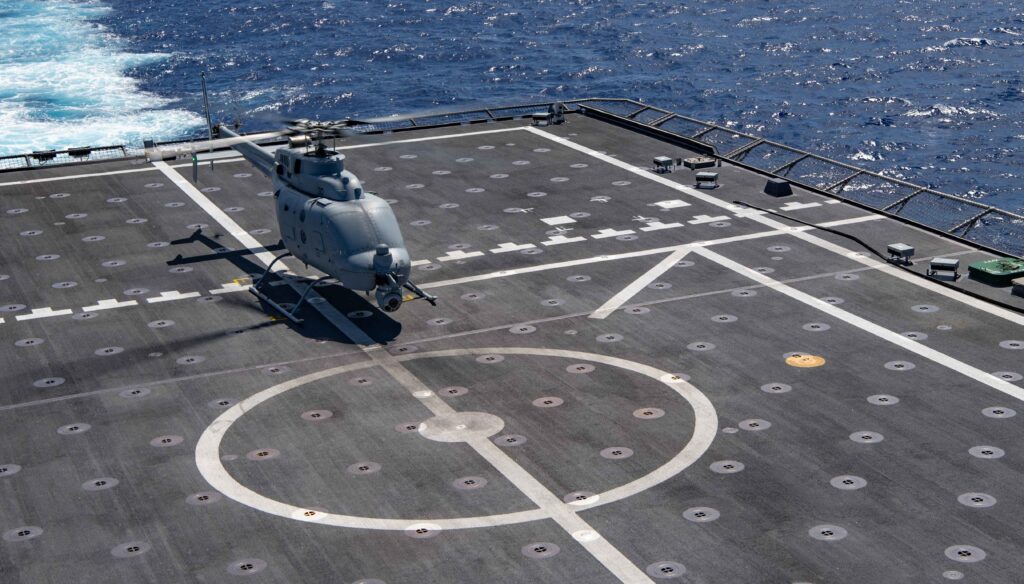
PHILIPPINE SEA — The Independence-variant littoral combat ship USS Jackson (LCS 6) completed underway return to flight operations of the Navy’s unmanned helicopter, the MQ-8C Fire Scout, in the Philippine Sea on April 20, commander Destroyer Squadron 7 public affairs said April 27.
The flights at sea were a conclusion of MQ-8 operational testing to return to routine flights on littoral combat ships deployed to the Indo-Pacific. The MQ-8C, assigned to the “Wildcards” of Helicopter Sea Combat Squadron (HSC) 23, attached to Jackson, operated simultaneously with the squadron’s MH-60S Seahawk helicopter.
The completion of the return to flight operations will allow the MQ-8C to continue to operate concurrently with other ships and airborne assets as operations require. In recent weeks, the “Blackjacks” of Helicopter Sea Combat Squadron (HSC) 21 also completed return to flight operations for their MQ-8B Fire Scout variants, assigned to USS Tulsa (LCS 16) and USS Charleston (LCS 18) on deployment in the U.S. 7th Fleet area of operations.
“It’s great to be flying the MQ-8C again, especially for an extended period with our MH-60S,” said Lt. Cmdr. Richard Mooney, head of HSC-23 detachment attached to Jackson. “Coordinated manned-unmanned operations like these provide numerous advantages to our surface combatants.”
MQ-8B and C Fire Scout variants are designed for suitably equipped ship-based and land-based autonomous systems. MQ-8B and C Fire Scout combined with MH-60S extend Naval Aviation’s capability to support maritime operations providing integrated, over-the-horizon intelligence, surveillance, reconnaissance and targeting, and combat logistics support.
Fire Scout operations are a whole-ship effort, requiring effective coordination between the aviation and surface entities aboard.
“I am extremely proud of our crew and the HSC-23 detachment for their planning and execution in getting the MQ-8C in the air,” said Cmdr. Brian Bungay, commanding officer of the USS Jackson. “We’re excited to build on this success and continue to increase the LCS’s war-fighting capability.”
Attached to DESRON 7, USS Jackson is on a rotational deployment to the U.S. 7th Fleet area of operations in support of security and stability in the region, and to work alongside allied and partner navies to provide maritime security and stability, key pillars of a free and open Indo-Pacific.
